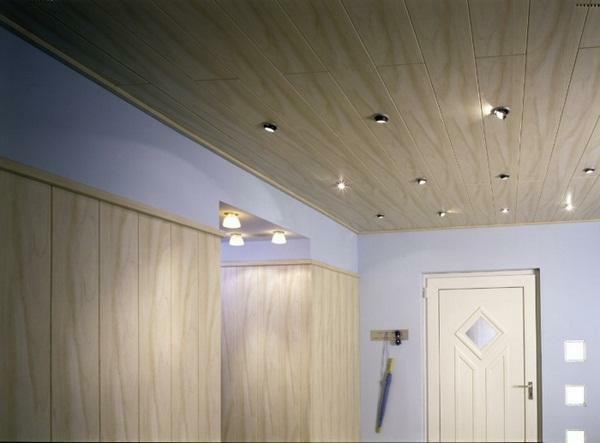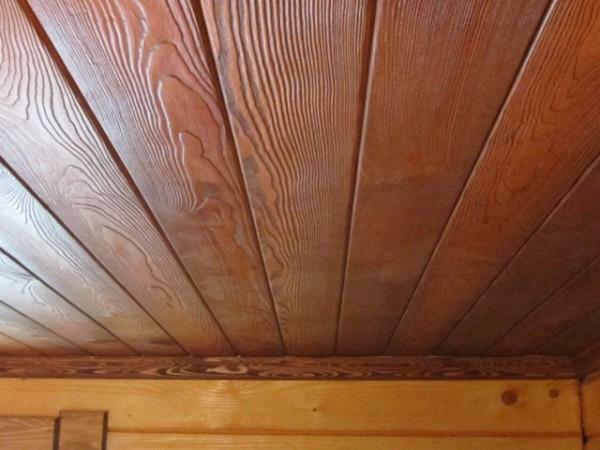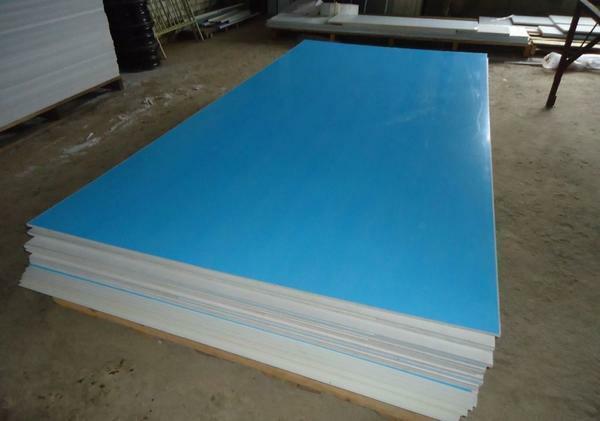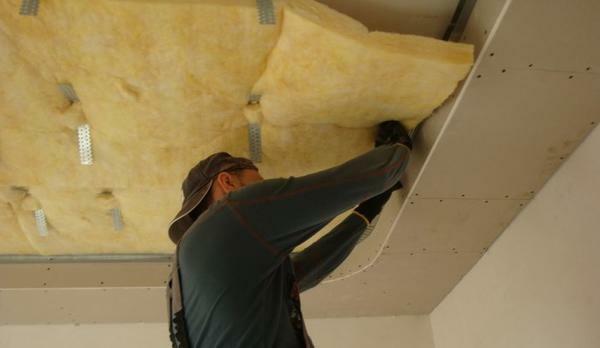 To prevent the loss of heat through the ceiling, it is necessary to carry out the process of warming What better insulate: roof or ceiling?Experts argue that it is better to make the insulation of the ceiling from the inside. Before you start the construction work you need to choose the right material and finish the finish. Which insulation is the best?The answer to this question can not be given by any master, because each material for the insulation of the ceiling has its advantages and disadvantages.
To prevent the loss of heat through the ceiling, it is necessary to carry out the process of warming What better insulate: roof or ceiling?Experts argue that it is better to make the insulation of the ceiling from the inside. Before you start the construction work you need to choose the right material and finish the finish. Which insulation is the best?The answer to this question can not be given by any master, because each material for the insulation of the ceiling has its advantages and disadvantages.
-
- Polyurethane foam and ceiling
- What insulation for the ceiling is better to use
- Warming ceiling polyurethane and polystyrene foam
- What more insulation for walls and ceilings can be used
- Which layer of insulation should be packed to the ceiling
- Choose non-flammable insulation to walls and ceilings
- Thermal insulation using polyurethane foam( video)
Polyurethane foam and ceiling
Polyurethane foam - UnicaMaterial that can be used to insulate the ceiling in a dacha or a brick house. If you are looking for the cheapest method of warming a holiday home, then the mounting foam is exactly what you need. Foiled film costs about 2-3 times more expensive.
The mounting foam can be applied in several ways. If the walls are not yet finished, then the mounting foam should be sprayed with a thin layer on the frame. In the case where the finish of walls and ceiling is already ready, with the help of mounting foam you just need to fill the slots or microdefects.
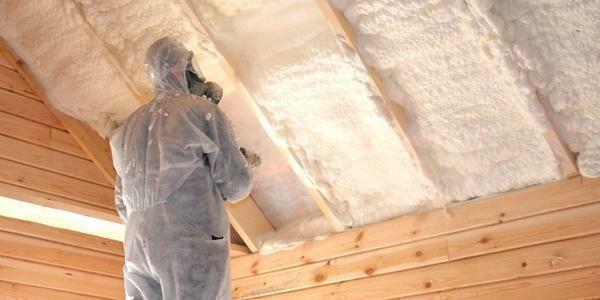 Polyurethane foam structure allows insulate any shape in a short time
Polyurethane foam structure allows insulate any shape in a short time
algorithm applying foam to the ceiling:
- must first drill a small hole in the surface.
- Then you need to tape the cracks. This is to ensure that the material does not flow out after it begins to expand.
- Fill the foam in the crevice or on the frame. Watch how it will expand.
- Allow the foam to dry, and only then proceed to finish the finish.
What insulation for the ceiling is better to use
If you have an attic, it is best to use any bulk material. For example, you can warm the house with sawdust, glass wool, straw or expanded clay. Also a good effect gives reeds.
Experts believe that it is best to use such material as linen for insulation of a residential house. It is not prone to rot and is cheap. However, this material has a significant disadvantage - it is easily ignited. Fill the flax with a layer of 4-5 centimeters.
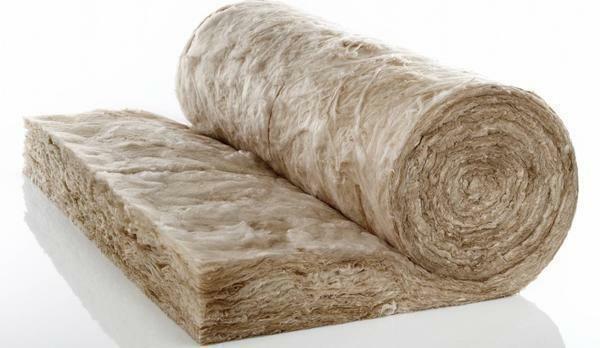 Glass wool perfectly insulates walls and ceilings, keeps heat in the living room.
Glass wool perfectly insulates walls and ceilings, keeps heat in the living room.
Sawdust is also a good material, however, they are irrational to use, as they are easily flammable. In addition, sawdust often comes in the taste of rodents. Use straw is possible only provided that in the attic are not installed any heat sources. Expanded clay is a convenient loose material, as it is possible to lay a concrete overlay on top of it.
ceiling insulation technology with bulk material:
- First you need to put on the floor of the attic kraft paper.
- Top bulk material.
- Then lay the boards. They are needed in order to move around the attic.
Insulation of the ceiling with polyurethane foam and expanded polystyrene
If you are looking for inexpensive foil material, you can use polyurethane foam. This material is not deformed under the influence of temperatures and has high thermal insulation properties.
Polyurethane foam must be applied to the ceiling by spraying. At the same time, the indoor air temperature should be at least 10 degrees. Before spraying the material, you must clean the ceiling of dirt and dust. It is also recommended to degrease the surface.
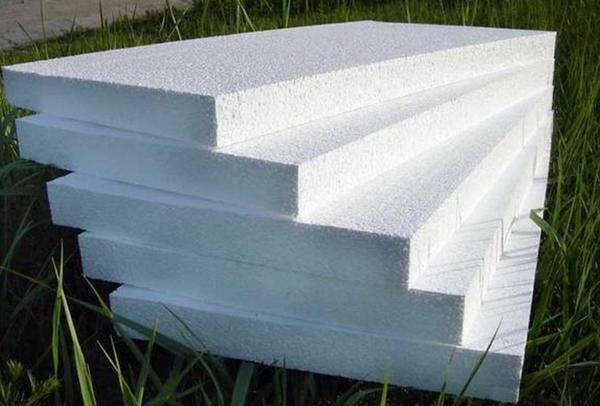 Styrofoam - a modern, inexpensive, environmentally friendly insulation
Styrofoam - a modern, inexpensive, environmentally friendly insulation
Also for the insulation of the ceiling you can use expanded polystyrene. When using this material, there is no need to produce additional vapor barrier. In addition, expanded polystyrene does not lose its thermal insulation qualities over time.
Sequence of insulation of the ceiling with expanded polystyrene:
- First you need to clean the ceiling of dirt.
- After this, lay the plates of expanded polystyrene into the space between the beams.
- Remove gaps between the plate and the beam using a mounting foam. Cover the ceiling with boards.
- .
What other insulation for walls and ceilings can I use
What other materials can be used to insulate walls and ceilings?If desired, you can use penotherm or penofolom. The density of these materials is quite high. Due to this, penotherm and penofol it is expedient to apply for insulation of ceilings from the inside.
If you want to purchase inexpensive material, it is recommended to choose the penotherm. This material is relatively fire-resistant and durable. For finishing the ceilings it is recommended to use a penotherm 5 mm thick.
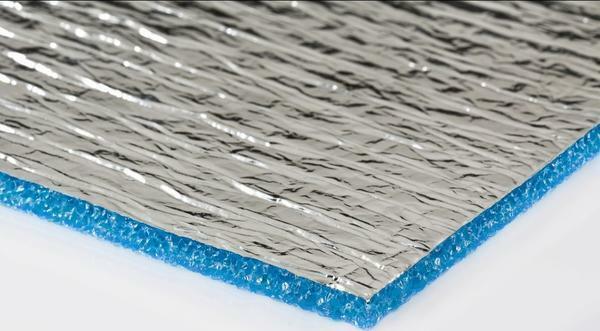 Foamed penofol is a strong, self-adhesive material used to prevent heat loss in the room.
Foamed penofol is a strong, self-adhesive material used to prevent heat loss in the room.
The penotherm is installed in 3 stages:
- First you need to attach the penotherm to the ceiling.
- After this, fix the material with nails.
- Next, stick the adhesive tape along the joint line.
Installation of foam foam is similar. This material is slightly more expensive than the penotherm, however, it has better performance characteristics.
The benefits of penofol include:
- Low specific gravity.
- Low thermal conductivity.
- Durability.
Which layer of insulation must be laid on the ceiling
When choosing the thickness of the thermal insulation layer, you need to pay attention to the dimensions and density of the material. If you use roll materials, for example, penotherm or penofol, the thickness of the thermal insulation layer should be approximately 3-6 millimeters. If you use expanded polystyrene, then the layer thickness should be at least 12 centimeters.
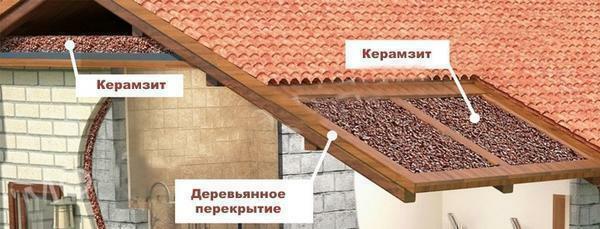 Thermal insulation of the ceiling space with claydite not only protects the home from the cold, but also significantly reduces the financial costs of heating the house
Thermal insulation of the ceiling space with claydite not only protects the home from the cold, but also significantly reduces the financial costs of heating the house
When using bulk materials, the thermal insulation layer should have a greater thickness. If you use sawdust, expanded clay, straw or flax, the thickness of the insulation must be 3-5 cm.
When choosing the optimum layer thickness, you should also consider:
- Heating in the attic.
- The density of the material.
- Method of finishing the ceiling.
Choosing a non-combustible insulation for walls and ceilings
Which non-combustible material is best used?It is best to apply expanded clay. This material is made of clay. This material should be covered with a layer of 3-5 centimeters. If desired, a lath can be installed on top of the claydite.
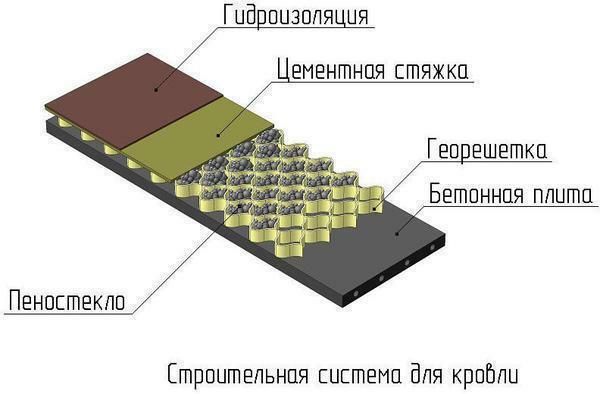 Thermal insulation plan for flat roof with
Thermal insulation plan for flat roof with
The best non-combustible material is foam glass. This material has high moisture resistance characteristics and is not subject to combustion. Foam glass is not subject to deformation even at an air temperature of 500 degrees. Alternatively, you can use basalt insulation.
Fireproof materials are manufactured by the following companies:
- Isover. Thermal insulation materials made by this company have a low specific gravity and good elasticity.
- Technonikol. The company manufactures fireproof basalt insulation. This material can be used for finishing walls and ceilings.
- Ursa Geo. The company is engaged in manufacturing inexpensive fire-resistant materials.
Thermal insulation with mounting foam( video)
Which heater should you use to solve only you. Each material has its own characteristics. If you want to choose an inexpensive insulation, give preference to expanded clay or mineral wool. These materials are fireproof and durable. With an unlimited budget, polyurethane is the best choice. However, this material can be applied to the ceiling only with the help of specialized equipment.
